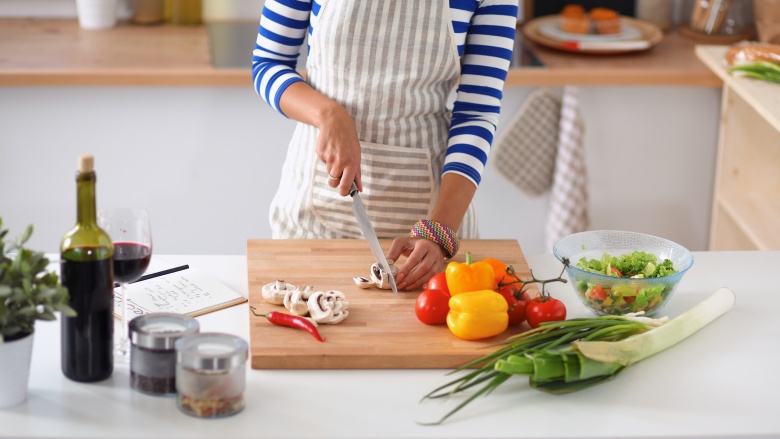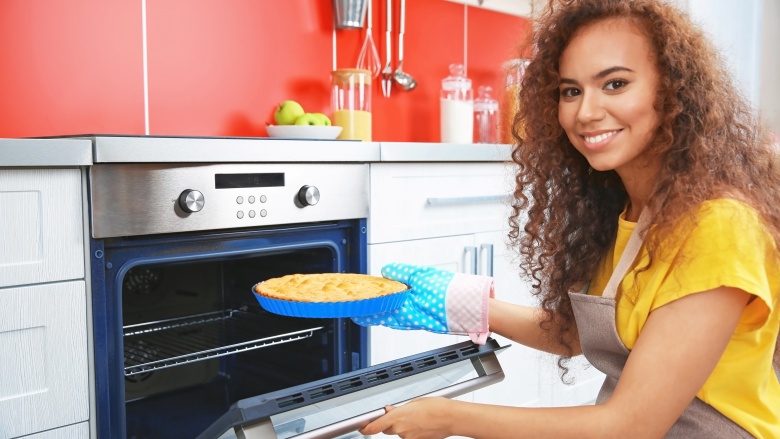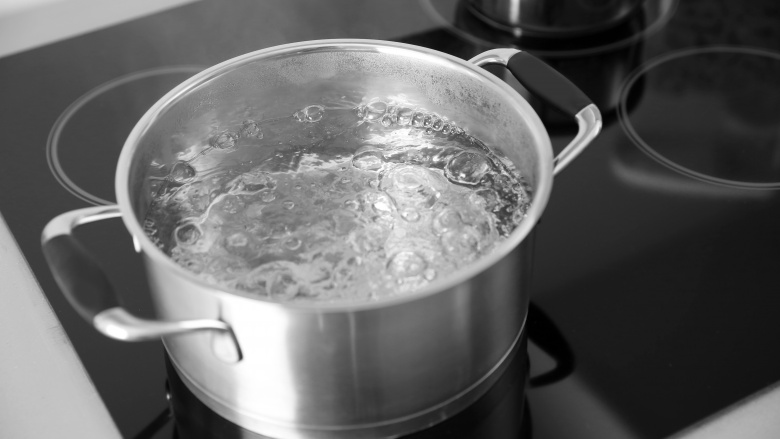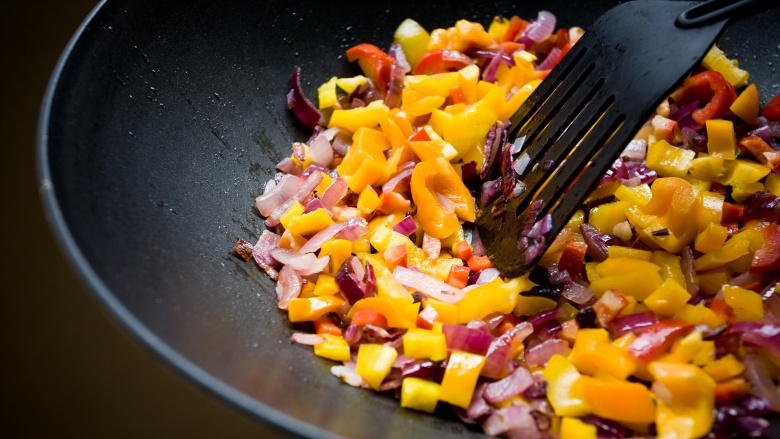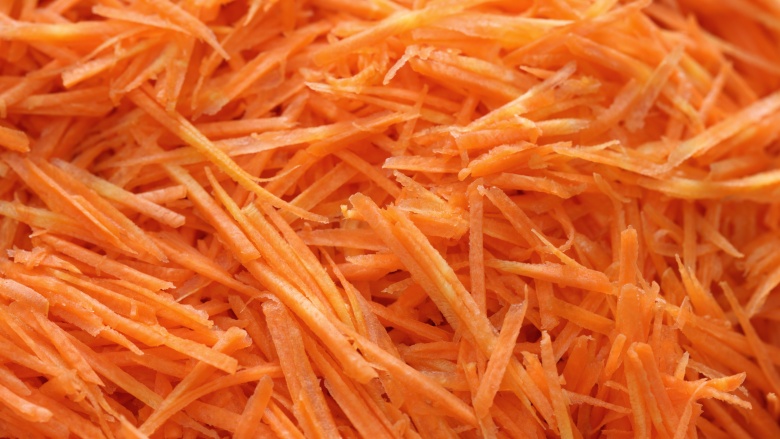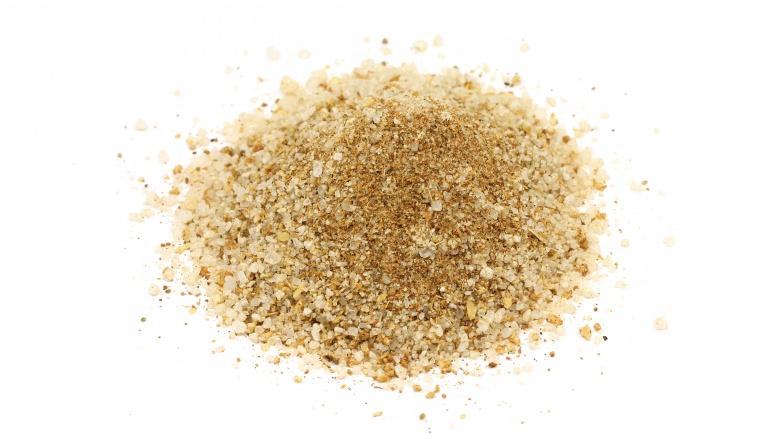Cooking Terms You've Been Using All Wrong
Figuring out how to cook your own meals is a lifesaver no matter which way you look at it. If you're on a budget, your bank account will thank you. In most cases, it costs less to dine in than to go out. Looking to eat more whole foods and consume less fat, sodium, and sugar? Preparing food for yourself lets you take control of what you put into your body, which is always a good thing. Lastly, home cooking is a terrific way to gather with people you love to prepare nourishing meals for sharing.
At the end of the day, learning how to cook is nothing more than following a recipe, getting comfortable in the kitchen, and infusing your own personal style into the dishes you prepare. The hardest part is translating all of those vague cooking terms into language that makes practical sense. To that end, I want to help! Here's a brief guide to confusing words you might encounter and their real meanings. Master this culinary language and you'll have no trouble whipping up envy-inducing, Insta-worthy dinners.
Size totally matters
When it comes to food prep, cutting up ingredients usually plays some part in the process. And for this, you'll do well to know the truth: Size matters. Yes, chopped, diced, minced, and sliced are common recipe directives — but what do all of these words actually mean? They obviously all refer to how food is cut up, but they're each slightly different. Different recipes call for different sizes before you start your cooking fun. If you're cooking a stew that requires a chunky texture, vegetables and additional proteins might be larger in size. Pungent aromatics like garlic or onion may need to be smaller since you don't want to bite into huge chunks of them.
- Chopped: For me, chopped is the most confusing of the cooking prep terms because the word really gives you zero clues about the size. If a recipe calls for chopped veggies, you'll want to cut them into relatively large pieces, about ½-inch to ¾-inch squares. While they don't need to be cut into perfect squares, you do want to make your pieces as uniform as possible to ensure even cooking.
- Diced: Think of diced vegetables as smaller versions of chopped ones. The recipe you're using will often indicate how big to cut the pieces. If not, you'll most likely want to cut the vegetables into ¼-inch squares — as uniformly as possible, of course.
- Minced: When you go to mince an ingredient, you want to cut it as small as you can get it. Usually, mincing is called for when you're using bold ingredients that may overpower a dish if pieces are left too large. Small bits tend to blend more seamlessly, flavoring without dominating.
The oven has different functions?
While you probably associate the oven with baking, broiling, and roasting, you might also use these terms interchangeably. They actually do have separate meanings indicating different methods of cooking. While you might roast a chicken or bake a cake, you may broil fish. The differences lie in the times and temps utilized. I know. Crazy!
- Broiling: Whether your broiler is in the main oven itself or a separate compartment beneath your oven, broiling refers to cooking food under direct high heat. This usually means you'll either use the broiler setting for your oven or the highest temperature possible to cook the food as quickly as possible. This method is ideal for finishing dishes, like getting a toasty topping on a casserole or crispy skin on chicken.
- Roasting: In contrast to broiling where you use direct heat, roasting refers to cooking meat or vegetables using the cumulative hot air inside the heated oven. You'll often set your oven to temperatures ranging anywhere from 250° to 500°. This preparation is perfect for poultry (hello, Thanksgiving turkey), hearty meats, and seasonal vegetables.
- Baking: On the other hand, baking involves cooking foods that require the oven's heat in order to gain their shape or form. Think cakes, muffins, and souffles. Generally, these foods are baked at lower temperatures than you would use to broil or roast — from 200° to 400°.
Heating up water? What can be easier?
While it may seem like no big deal to turn up the heat on liquids like stock or water, the heat level really does matter for best cooking results. When I first learned how to cook, I assumed simmering was a different way to say boiling, but alas, no. When I started to undercook or overcook everything I turned out of the kitchen, I started taking words a little more seriously. Hard life lessons.
- Simmer: When a recipe cues you to simmer, this refers to heating the liquid on low to medium-low heat until you observe a few small bubbles at the surface and some release of steam. This slow, gentle method of cooking is often cued when you want to meld flavors without overcooking your dish. It's the go-to heat level for cooking sauces, soups, and stews.
- Boil: On the other hand, a boil refers to the presence of large bubbles that start at the bottom of the pot and rise to the top rapidly. This higher heat level is used when you need to cook pasta or very firm vegetables like potatoes and carrots.
All pan cooking is pan cooking ... or not
While sauteing and pan frying both take place in a pan, they are not the same thing. Even though these terms are used as one and the same, figuring out their differences means you'll have a better grip on why certain ingredients are prepared in particular ways.
- Saute: Sauteing is one of the most oft-used cooking techniques for cooking vegetables and, less often, meat. This versatile method refers to cooking (and stirring) small cuts of food over medium-high to high heat until they are browned on the outside and cooked through or tender. In a recipe, you'll frequently encounter cues to saute vegetables, particularly aromatics like onion and garlic.
- Pan fry: Pan frying is reserved for cooking meats and vegetables that have not been cut into smaller pieces. Using this method, chicken cutlets, steak, and pork chops are cooked over lower heat than you would use to saute. Lowering the heat level ensures that you are able to brown the exterior over a longer period so the inside is cooked through when you're finished.
One kitchen tool, two outcomes
You've probably noticed your grater has one side with large holes and one with tiny ones. There's actually a real reason! While in some cases you can use grated ingredients in place of shredded ones (like cheese maybe), knowing the difference matters for many other dishes. Once you notice how the textures differ, you'll know it forever.
- Shredded: Shredded cheeses or vegetables are often confused with grated ones for good reason. The descriptors are very close in meaning! You can achieve both preparations using the same home grater, which adds to the muddiness. A food that's been shredded looks like long strips. You'll want these long shredded pieces when you're making a slaw with carrots or pancakes using potatoes.
- Grated: Using the smaller holes on your grater, you can turn your food into small, fine pieces that are almost powdery in texture. This is most often used for hard cheeses such as Parmesan for finishing pasta.
Not a big deal — actually a tiny deal
If a recipe asks you to use anything less than ¼ teaspoon, you land in a no man's land of guessing measurements. A dash of this and a pinch of that are often cued in recipes with little indication of how much each refers to. Once you know, it'll matter only a little, but at least you'll have a frame of reference.
- Dash: Recipes sometimes call for imprecise measurements of salt or spices. You might find yourself wondering what a dash could possibly mean. Well, let's just say that a dash is equivalent to about ⅛ of a teaspoon, a measurement so small that you end up eyeballing anyway, right?
- Pinch: A pinch is slightly less than a dash, about 1/16 of a teaspoon. Theoretically, you can pinch the amount of whatever ingredient you're using between your index finger and your thumb. This can obviously vary a lot depending on the size of your fingers and how energetic you are about pinching. It's definitely an eyeballing situation, so don't sweat it.
The language of cooking can be foreign and strange sometimes, but please don't let mere words prevent you from rolling up your shirtsleeves and heading into the kitchen. Once you get this basic vocab down, you'll have plenty of time to experiment with dishes you've always wanted to render at home. I swear it's one of the best things in my life on the day to day.

